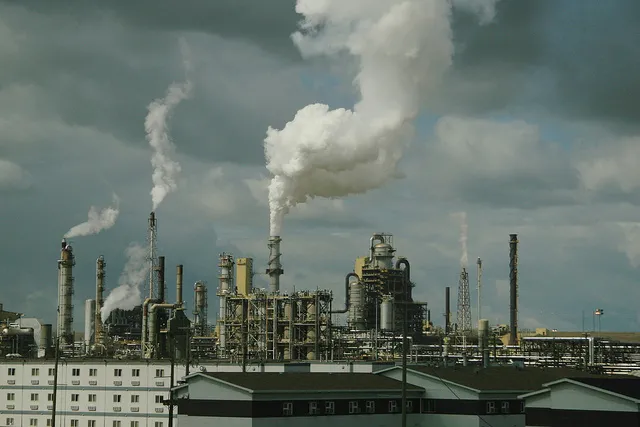Alberta’s newly appointed climate change minister, Diana McQueen, caused a stir last month by saying the province fully intended to meet its 2020 climate target. In most circumstances, a government promising to meet their own commitments wouldn’t raise many eyebrows. But this came as quite the surprise to many. After all, Alberta officials have long acknowledged that things were off course, and efforts to strengthen key policies and right the ship have been delayed repeatedly. It’s worth a deeper look at why the sudden optimism caught people off guard, and what it holds for Alberta’s larger climate challenge.
Oil impact
As Andrew Leach points out in the Calgary Herald’s excellent follow-up analysis, the obvious factor behind the sunnier outlook is the sudden drop in the price of oil; the oilsands are a primary driver of Alberta’s emissions growth and slower expansion in the near term will slow increases in pollution. A back-of-the-envelope calculation based on CAPP figures suggests a pause on new projects (not operating or under construction) could trim 15 Mt or so from projected 2020 oilsands emissions. Does that put Alberta in range of the 2020 target? First we have to figure out what that target is.
What’s the number?
Much of the confusion around Alberta’s targets is self-imposed. Because of the vague way it is expressed, there are two very different understandings of what the target is. The 2020 goal is expressed in Alberta’s 2008 climate strategy as a reduction of 50 Mt below "business-as-usual," or what emissions would have been if no action had been taken. Most people imagine that the 50 Mt target is meant to reflect changes in emissions brought about by policy — after all, this is entirely the point of comparing to a no-policy baseline.
The government evidently has a different interpretation. But, despite the Auditor General’s 2008 recommendation,[1] they have never translated the business-as-usual goal into a firm absolute number, to my knowledge. I have seen 260 Mt used in a presentation, but am not aware of it appearing in any public documents. (The intensity target of 50 per cent below 1990 levels by 2020 was not repeated in the 2008 climate strategy, but remains in Alberta’s legislation. Current trends put the province on track for about 40 per cent.)
If the target is indeed 260 Mt, the government is using a pre-recession, pre-oil crash baseline fixed in 2008. Taking the 15 Mt drop we might see in the oilsands off of Environment Canada’s latest all-in policy projections for 2020, we’re left with a gap of around 12 Mt. Still big, but not that hard to close for a government interested in doing so. But that’s not the whole story.
Why it matters
The point to all this is that targets are meant to be more than symbolism; they are meant to be way posts on the road to deeper transformation. Addressing Alberta’s emissions problem, especially beyond the short term, will require more than luck. Measures like emissions intensity and reductions brought about by policy can help us track progress. But relying on short-term economic fluctuations to gauge success doesn’t tell us much of anything, especially about Alberta’s most important 2020 goal: to stop the growth in absolute emissions and start heading in the other direction.
This commitment, to peak emissions in 2020, is critical both to Alberta’s reputation to and Canada’s ability to meet future climate goals in a remotely sensical manner. If the province hits the 260 Mt level on the back of an oil dip, they will still be nowhere close to putting emissions on a downward track. Emissions will still be headed up.
Andrew Leach puts it in terms of a person trying (halfheartedly) to eat healthier: “They used to have chicken wings and beer every night of the week, but now that they’re only eating them on weekends. Despite what they might tell you, the scale clearly shows they are getting heavier.”
Environment Canada projects Alberta’s emissions to keep on growing right through 2030. A slowdown in new oilsands development may slow emissions growth for a few years, but these projects aren’t going to disappear. They will be back as soon as the price of oil recovers. To extend Andrew’s analogy, the main reason our friend stopped eating wings and beer during the week was simply that their favourite spot was closed for renovations. As soon as it’s open again, they’ll be right back on their regular schedule.
This whole episode reminded me of 2008. At a climate conference late that year, Environment Minister Rob Renner joked that we needn’t worry about growing oilsands emissions, because the recession was taking care of that.
How did that turn out again?
[1] As then-auditor general Fred Dunn warned presciently in October 2008, “…the business-as-usual case is only a forecast, based on many assumptions such as the price of oil. The forecast becomes out of date each time the price of oil varies from the assumption. Therefore, performance reporting against this target becomes a hypothetical exercise, especially for the later periods. Performance reporting should compare actual results to the emissions-intensity target and the absolute emissions target.”







